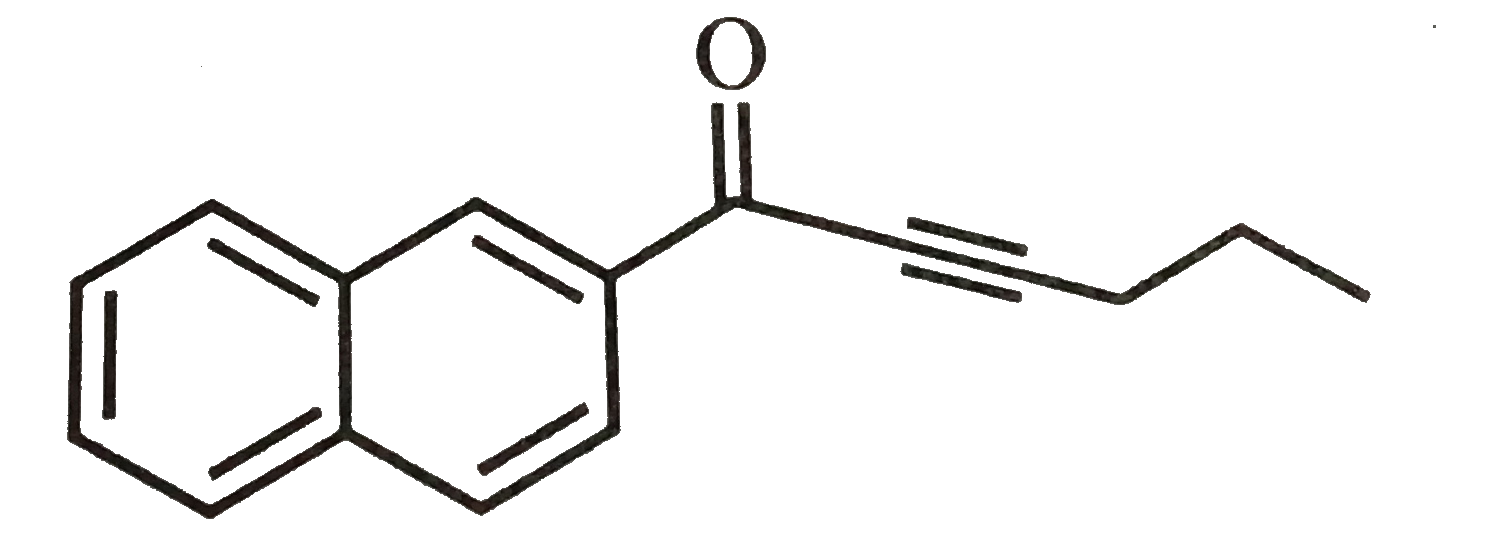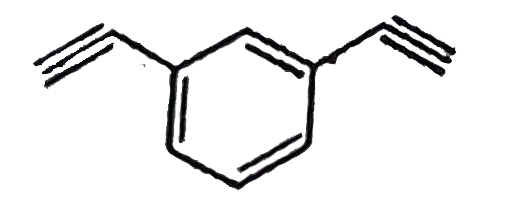18 C-H and 7 C- C sigma bond are in
cyclohexane
3,3-dimethylpentane
2,2,3-trimethylpentane
n-heptane
The correct Answer is:C
To determine which compound contains 18 C-H bonds and 7 C-C sigma bonds, we will analyze the structures of the given compounds step by step.
Step 1: Understand the Requirements
We need to find a compound that has:
- 18 C-H bonds
- 7 C-C sigma bonds
Step 2: Analyze Cyclohexane
1. Structure of Cyclohexane: Cyclohexane has a ring structure with 6 carbon atoms.
2. C-H Bonds: Each carbon in cyclohexane is bonded to 2 hydrogen atoms. Therefore, the total number of C-H bonds is:
C-H bonds=6 (carbons)×2 (hydrogens per carbon)=12
3. C-C Bonds: Cyclohexane has 6 C-C bonds (one between each pair of adjacent carbons).
4. Conclusion: Cyclohexane has 12 C-H bonds and 6 C-C bonds, so it does not satisfy the requirements.
Step 3: Analyze 3,3-Dimethylpentane
1. Structure of 3,3-Dimethylpentane: It has a backbone of 5 carbon atoms with 2 methyl groups on the third carbon.
2. C-C Bonds: The total number of C-C bonds can be counted as follows:
- There are 5 main carbon atoms plus 2 from the methyl groups, leading to a total of 7 C-C bonds.
3. C-H Bonds: Count the hydrogen atoms:
- Each of the 5 main carbons contributes a certain number of hydrogens depending on their bonding.
- After counting, we find that it has fewer than 18 C-H bonds.
4. Conclusion: 3,3-Dimethylpentane does not satisfy the requirement.
Step 4: Analyze 2,2,3-Trimethylpentane
1. Structure of 2,2,3-Trimethylpentane: It has a backbone of 5 carbon atoms with 3 methyl groups attached.
2. C-C Bonds: Counting the C-C bonds gives us:
- 7 C-C bonds.
3. C-H Bonds: Counting the hydrogen atoms, we find:
- 18 C-H bonds.
4. Conclusion: 2,2,3-Trimethylpentane satisfies both requirements.
Step 5: Analyze n-Heptane
1. Structure of n-Heptane: It has a straight chain of 7 carbon atoms.
2. C-C Bonds: Counting the C-C bonds gives us:
- 6 C-C bonds.
3. C-H Bonds: Counting the hydrogen atoms gives us:
- Fewer than 18 C-H bonds.
4. Conclusion: n-Heptane does not satisfy the requirement.
Final Conclusion
The compound that contains 18 C-H bonds and 7 C-C sigma bonds is 2,2,3-Trimethylpentane.
---
We need to find a compound that has:
- 18 C-H bonds
- 7 C-C sigma bonds
1. Structure of Cyclohexane: Cyclohexane has a ring structure with 6 carbon atoms.
2. C-H Bonds: Each carbon in cyclohexane is bonded to 2 hydrogen atoms. Therefore, the total number of C-H bonds is:
C-H bonds=6 (carbons)×2 (hydrogens per carbon)=12
3. C-C Bonds: Cyclohexane has 6 C-C bonds (one between each pair of adjacent carbons).
4. Conclusion: Cyclohexane has 12 C-H bonds and 6 C-C bonds, so it does not satisfy the requirements.
1. Structure of 3,3-Dimethylpentane: It has a backbone of 5 carbon atoms with 2 methyl groups on the third carbon.
2. C-C Bonds: The total number of C-C bonds can be counted as follows:
- There are 5 main carbon atoms plus 2 from the methyl groups, leading to a total of 7 C-C bonds.
3. C-H Bonds: Count the hydrogen atoms:
- Each of the 5 main carbons contributes a certain number of hydrogens depending on their bonding.
- After counting, we find that it has fewer than 18 C-H bonds.
4. Conclusion: 3,3-Dimethylpentane does not satisfy the requirement.
1. Structure of 2,2,3-Trimethylpentane: It has a backbone of 5 carbon atoms with 3 methyl groups attached.
2. C-C Bonds: Counting the C-C bonds gives us:
- 7 C-C bonds.
3. C-H Bonds: Counting the hydrogen atoms, we find:
- 18 C-H bonds.
4. Conclusion: 2,2,3-Trimethylpentane satisfies both requirements.
1. Structure of n-Heptane: It has a straight chain of 7 carbon atoms.
2. C-C Bonds: Counting the C-C bonds gives us:
- 6 C-C bonds.
3. C-H Bonds: Counting the hydrogen atoms gives us:
- Fewer than 18 C-H bonds.
4. Conclusion: n-Heptane does not satisfy the requirement.
The compound that contains 18 C-H bonds and 7 C-C sigma bonds is 2,2,3-Trimethylpentane.
Topper's Solved these Questions
- SOME BASIC PRINCIPLES AND TECHNIQUESBOOK - NARAYNACHAPTER - SOME BASIC PRINCIPLES AND TECHNIQUESEXERCISE - EXERCISE -IV (STRUCTURAL ISOMERISM)
8 Videos
- SOME BASIC PRINCIPLES AND TECHNIQUESBOOK - NARAYNACHAPTER - SOME BASIC PRINCIPLES AND TECHNIQUESEXERCISE - EXERCISE -IV (CLEAVAGE OF BONDS AND ELECTRONIC DISPLACEMENTS)
15 Videos
- SOME BASIC PRINCIPLES AND TECHNIQUESBOOK - NARAYNACHAPTER - SOME BASIC PRINCIPLES AND TECHNIQUESEXERCISE - EXERCISE - III (PREVIOUS YEARS EXAMS QUESTIONS)
58 Videos
- SOME BASIC CONCEPTS OF CHEMISTRYBOOK - NARAYNACHAPTER - SOME BASIC CONCEPTS OF CHEMISTRYEXERCISE - EXERCISE - IV
43 Videos
- STATES OF MATTERBOOK - NARAYNACHAPTER - STATES OF MATTEREXERCISE - A & R TYPE QUESTIONS
16 Videos
Similar Questions
Knowledge Check
C-H and 7 C-C sigma bonds are in
AcyclohexaneB3,3-dimethylphentaneC2,2,3-trimethylpentaneDn-heptaneIn hexa-1,3-diene-5-yne, the number of C−Cσ,C−Cπ and C−Hσ bonds respectively are:
A5, 4 and 6B6, 3 and 5C5, 3 and 6D6, 4 and 5In hexa-1,3-diene-5-yne, the number of C−Cσ,C−Cπ and C−Hσ bonds respectively are:
A5,5 and 5B5,3 and 6C5,4 and 6D6,3 and 5
The heat of formation of ethane is −19.46kcal. Bond enegries of H−H,C−H and C−C bonds are 104.18,99.0 and 80.0kcal, respectively. Calculate the heat of atomisation of graphite.
View SolutionHow many sp2−sp2C−Cσ bonds are present in acetophenone.
View SolutionAn alkene ‘A’ contains three C – C, eight C – H (σ) bonds and one C – C (π) bond. ‘A’ on ozonolysis gives two moles of an aldehyde of molar mass 44 u. Write IUPAC name of ‘A’.
View SolutionThe number of C - C sigma bonds in the compound

View SolutionThe number of C-C sigma bonds in the compound

View Solution

